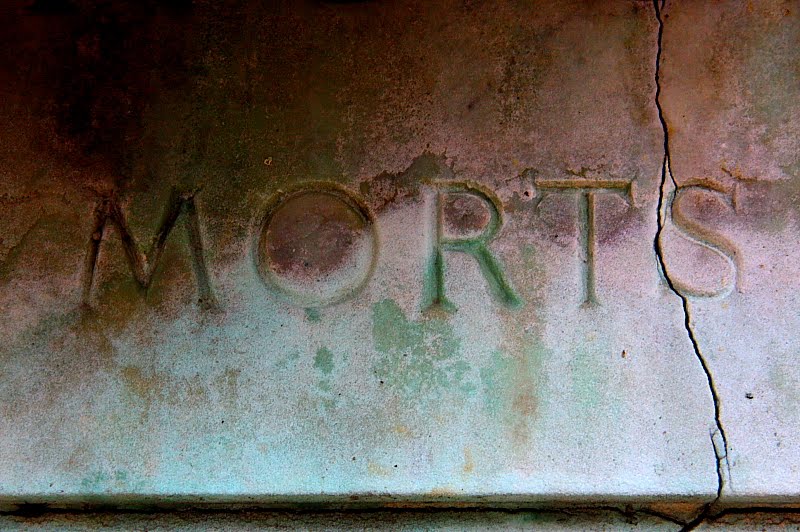.
.
Walking in Père Lachaise cemetery the other day, we came across, through a little twist of fate, Oscar Wilde's tomb, which I had never visited before, in all my many trips to Père Lachaise. Along with Jim Morrison and Edith Piaf, it is probably one of the most heavily visited sites in Père Lachaise, I don't know how I'd missed it all these years. As you are probably aware, Oscar Wilde passed away in poverty in Paris on the 30th of November, 1900, so 110 years ago today. From a distance, I couldn't understand what all the red marks were on the large stone block of sculpture there.
.
.
.
It was only on closer inspection that I realized that for the most part, the red marks were traces of kisses with generous amounts of lipstick involved. A multitude of kisses decorate his grave ! Oh, what man wouldn't be happy to have so many come and kiss his tombstone ?
.
.
.
.
.
.
.
.
.
.
.
.
.
Some graffiti left could not agree on the right wording of a quotation.
.
.
.
.
.
.
.
.
Some of the graffiti, though well-intentioned, was misspelled, the word "coeur" is masculine in French, so it should say "mon coeur" and not "ma coeur". I'm not sure that Oscar would have appreciated such flaws of language.
.
.
.
.
.
I admit I thought it a bit unfortunate that even the epitaph carved in the stone had been written over by inconsiderate visitors. In case you may not have been there to read it, it says :
.
"And alien tears will fill for him
Pity's long-broken urn
For his mourners will be outcast men
And outcasts always mourn"
.
This is, of course, a verse from Oscar Wilde's The Ballad of Reading Gaol . . . a dark and epic poem if there ever was one. I think the only piece of writing I can ever recall reading which was longer and even grimmer, if that is possible, was The City of Dreadful Night, by James Thomson. Wilde's prison inspired Ballad was written some twenty years years after Thomson's dire piece of writing came out, one could almost wonder if there was some inspiration found there.
.
.
.
.
.
.
Even the Sphynx had been kissed . . .
.
.
.
.
.
.
Before that afternoon and actually seeing Wilde's tomb (seeing is believing) I had no idea that a long-running tradition called for fervent admirers to leave a trace with a well-lipsticked kiss on the monument. But while I was there, three young ladies were carrying out the tradition. Preparing the lipstick:
.
.
.
.
.
Ready !
.
.
.
.
.
Go !
.
.
.
One of her friends took the plunge shortly thereafter, after testing the effect on her friend's cheek. I imagine it must be a fairly cold surface to kiss.
.
.
.
.
Perhaps the most loving of tributes, a bouquet of red roses . . .
.
.
.
.
.
.
.
.































































































